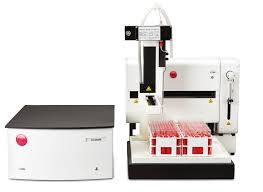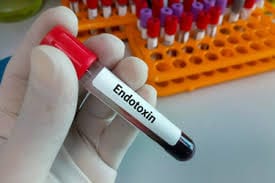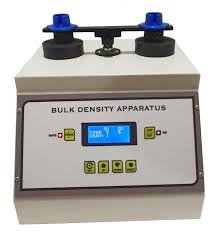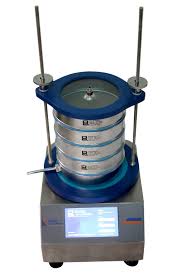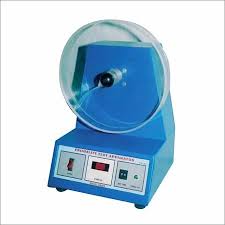|
Getting your Trinity Audio player ready... |
Q4B Annex 3 (R1):Test for Particulate Contamination: Sub-Visible Particles Chapter
1. Introduction: Particulate Contamination
Particulate Contamination: This annex is the result of the Q4B evaluation process for the test concerning particulate contamination in parenteral products, specifically sub-visible particles. The Q4B process, established by the International Council for Harmonisation (ICH), aims to harmonize testing and regulatory requirements across different regions for pharmaceutical products. The proposed texts for the annex were submitted by the Pharmacopoeial Discussion Group (PDG), a collaborative body composed of representatives from pharmacopoeias worldwide.
The annex focuses on standardizing the test for sub-visible particulate contamination, a critical factor in ensuring the safety and quality of injectable pharmaceutical products. Particulate contamination, especially sub-visible particles, can pose significant risks to patients, including inflammatory responses, embolism, or other adverse effects when injected into the bloodstream. Therefore, the harmonization of methods for detecting and quantifying these particles is crucial for global pharmaceutical standards.
2. Q4B Outcome
The Q4B process culminated in an evaluation by the ICH Steering Committee, which, based on the recommendations of the Q4B Expert Working Group (EWG), has provided guidance on how to align the pharmacopeial standards of different regions for testing particulate contamination in parenteral products. The official pharmacopoeial texts under consideration for interchangeability are:
- European Pharmacopoeia (Ph.Eur.) 2.9.19: Particulate Contamination: Sub-visible Particles
- Japanese Pharmacopoeia (JP) 6.07: Insoluble Particulate Matter Test for Injections
- United States Pharmacopeia (USP) <788>: Particulate Matter in Injections
The evaluation and recommendations emphasize the need for consistency across the ICH regions in terms of analytical procedures and acceptance criteria. However, several important conditions must be met for the texts to be considered interchangeable across these regions.
2.1 Analytical Procedures
The ICH Steering Committee recommends that the pharmacopoeial texts referenced above can be used interchangeably in all ICH regions, provided certain conditions are fulfilled. Specifically, instrument calibration and system suitability tests must adhere to the respective regional Good Manufacturing Practice (GMP) guidelines. This ensures that the testing equipment and procedures used for detecting particulate contamination are suitable and reliable for pharmaceutical production in each region.
Manufacturers must comply with the regional GMP requirements to ensure the validity and consistency of the results, regardless of the specific pharmacopoeial text being followed. This harmonized approach will help streamline the testing process for particulate contamination and facilitate global trade and product development.
2.2 Acceptance Criteria
While the proposed analytical procedures for particulate contamination are generally interchangeable across regions, there is an important distinction when it comes to the acceptance criteria for parenteral products, especially those with a nominal volume of 100 milliliters (mL). The criteria set forth in the Japanese Pharmacopoeia (JP) are more stringent than those in the European Pharmacopoeia (Ph.Eur.) and the United States Pharmacopeia (USP) for products of this volume. Therefore, for nominal 100-mL parenteral products, the acceptance criteria from the JP are not considered interchangeable with the other two pharmacopoeias.
This difference in acceptance criteria for the 100-mL nominal volume reflects the varying regulatory standards in each region. Manufacturers must be mindful of these variations when conducting particulate contamination tests, particularly for larger-volume parenteral products, as different regions may require compliance with distinct standards for acceptance.
3. Timing of Annex Implementation
The timing of the implementation of this annex may vary across regions. Once the annex is incorporated into the regulatory process at ICH Step 5, it will become applicable in the regions that have adopted it. Each region may have its own timeline for adopting the annex and aligning local regulatory processes with the recommendations outlined in this document.
For example, the European Union (EU) may adopt the annex at a different time than the United States or Japan, depending on regional regulatory processes and the time required for integration into national or regional pharmacopeias.
4. Considerations for Implementation
When implementing the Q4B-evaluated pharmacopoeial texts referenced in Section 2.1, sponsors or manufacturers must adhere to specific regulatory procedures related to compendial changes in each region. This section outlines several key considerations that manufacturers should take into account during the implementation process.
4.1 General Consideration
When pharmaceutical sponsors or manufacturers decide to adopt the Q4B-evaluated methods referenced in this annex, any modifications to their existing testing methods must be handled in accordance with the relevant regional regulatory mechanisms. These may include change notifications, variations, and prior approval procedures as mandated by the local regulatory authorities.
This is important for maintaining compliance with regional standards and ensuring that any changes made to testing methods are appropriately documented and approved. Manufacturers should be prepared to justify the suitability and acceptability of the new methods when submitting regulatory filings or seeking approvals for their products.
4.2 FDA Consideration
The United States Food and Drug Administration (FDA) has agreed that the pharmacopoeial texts referenced in Section 2.1 of this annex can be considered interchangeable, provided that manufacturers meet the conditions set forth in the annex. However, the FDA may request that manufacturers demonstrate the suitability of the chosen method for specific products or materials, regardless of the pharmacopoeia from which the method originates.
In the case of nominal 100-mL parenteral products, the FDA allows the interchangeability of testing criteria across the three pharmacopoeias. Manufacturers should be prepared to provide adequate validation and documentation to support their testing method, particularly if the FDA has concerns about its applicability to a specific product.
4.3 EU Consideration
In the European Union, the monographs of the European Pharmacopoeia (Ph.Eur.) are mandatory for regulatory compliance. However, the regulatory authorities may accept the use of corresponding texts from other pharmacopoeias, such as the Japanese Pharmacopoeia (JP) or the United States Pharmacopeia (USP), as long as the conditions set out in this annex are met. This allows manufacturers in the EU to reference alternative pharmacopoeial texts while still ensuring compliance with the Ph. Eur. Chapter on particulate contamination.
For nominal 100-mL parenteral products, the EU considers the testing criteria from all three pharmacopoeias to be interchangeable. Manufacturers should ensure that they meet the regional requirements when submitting marketing authorization applications, renewals, or variations that reference alternative pharmacopoeial standards.
4.4 MHLW Consideration
The Ministry of Health, Labour and Welfare (MHLW) in Japan also accepts the interchangeability of the pharmacopoeial texts referenced in Section 2.1 of this annex. However, the specific details of how the annex will be implemented in Japan will be communicated through a formal notification from the MHLW once the annex is officially adopted.
Manufacturers in Japan should stay informed about the timeline and requirements for implementing the annex in the Japanese regulatory framework and ensure that they comply with any updates or modifications introduced by the MHLW.
4.5 Health Canada Consideration
In Canada, Health Canada considers the pharmacopoeial texts referenced in Section 2.1 of this annex to be interchangeable, provided that the conditions outlined in the annex are met. As with other regions, the acceptance criteria for nominal 100-mL parenteral products are considered interchangeable across the three pharmacopoeias. Manufacturers in Canada must follow the applicable regulatory procedures for changes to testing methods and ensure that their products meet the Canadian requirements for particulate contamination testing.
5. References Used for the Q4B Evaluation
The Q4B evaluation of the test for particulate contamination in parenteral products was based on several key documents and pharmacopoeial references. These include:
- PDG Stage 5B Sign-Off Document: This document was issued by the Japanese Pharmacopoeial Forum (Volume 13, Number 3, August 2004) and provided the basis for the harmonization process.
- European Pharmacopoeia (Ph.Eur.): The 5th Edition (official as of January 2005) includes the monograph on Particulate Contamination: Sub-visible Particles (reference 01/2005: 20919).
- Japanese Pharmacopoeia (JP): The 15th Edition of the JP includes the method for Insoluble Particulate Matter Test for Injections (as of March 31, 2006, under Ministry of Health, Labour and Welfare Ministerial Notification No. 285). A revision was made in September 2007 to clarify a sentence in the introduction.
- United States Pharmacopeia (USP): The USP <788> revision bulletin, issued on April 4, 2007, outlines the criteria for testing particulate matter in injections.
